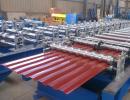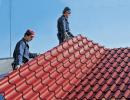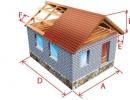Accounting roof of the house: species, design, nodes and device
The construction of the roof is the final stage of the construction of any building. She plays not only a technical role, but is a decoration of the house. If you decide that your housing will have a scope roof, you should know that such structures are characterized by complexity. Depending on the shape of the skate, the inclined roof may be a forcep, single or tent. Such structures can have a variety of form: spherical, pyramidal, conical, etc. Climatic conditions made pitched roofs with the most common in rustic construction.
general description
The scope roof contributes to the natural flow of wax and rainwater. The angle is determined by the angle under which the skate is tilted to the horizon. These structures have an angle of at least 5 °, but are equipped with such in which individual sections have a direct angle of inclination. Depending on how the overall architecture of the house, climate, finishing, as well as the selected material, the scope roof may have a certain device. For example, if a sufficiently large amount of rainfall falls in your region, and the roofing coating is not very dense, then the rods should be steep. With strong winds to reduce pressure, the surface should be more common. If you correctly select a bias, then you will be able to reduce the cost of construction and labor costs. Cool structures are expensive, as it is possible to use materials in a larger volume.
Main types of scanty roofs
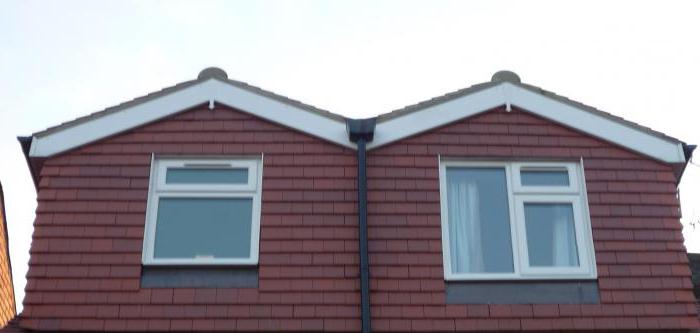
The 4-stranded roof refers to one of the varieties of the same constructions. Among them should be highlighted with a single, duct, semi-haul, attic, dome, conical, pyramidal, and four-crucible. Single-skate are the most simple in shape, they will divert water only in one direction. They are used to cover small houses, poles, attacks, temporary structures and household buildings. Constructions in this case will not have an attic or space under the roof.
A 2-stranded roof is used in low-rise construction. It possesses a rectangular shape, and the side parts are called frontons. The semi-haul roof differs from the four-tight in that the inclined plane is cut off part of the fronton. Pyramidal roofs are used when the house has a square or form of the correct rectangle.
Design and main nodes
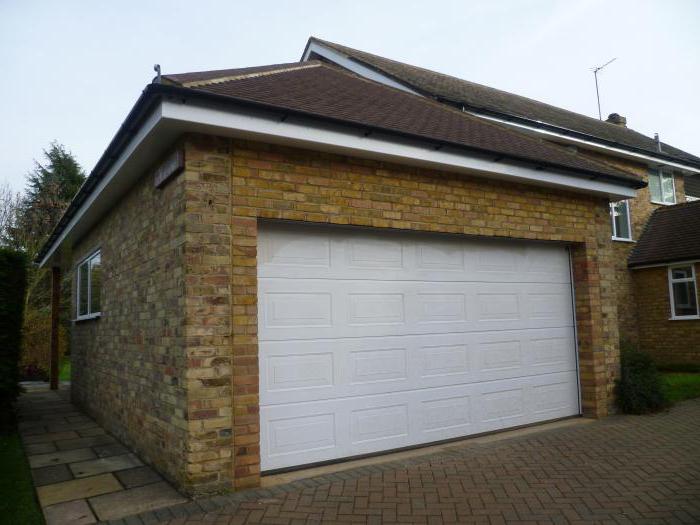
The roofs of the pitched roofs have two main elements, namely enclosing and carriers. The latter are needed to accept loads from snow, wind and roof itself. With their help, the weight of the bearing walls and separate supports are distributed. At the same time, quite stringent requirements are presented to the strength of carrier elements. The main components are Mauerlat and the rafter system. It is impossible not to note that the device of the pitched roof implies fasteners in the form of racks, ducts and riglels. The needed hardness can be achieved by
Mauerlat is a bar, which is supporting for inclined rafters from a tree. With this element, the load from the roof is distributed. Maurylalat is a kind of foundation for design. If you want to perform a roof in a classic understanding, then for the Mauerlat device, you should use a side of 15 cm. The minimum value for the bar is 10 cm. The pitched roof of the home wizard can be performed. If she has Mauerlat, then it should be positioned along the entire length of the building or install only under rare legs.
When using the rafting legs of a small cross section, the system during operation can be asked. In order to exclude this problem, the grille should be installed, which will be riggers, racks and soars. To perform racks and subposses, a 15-centimeter board should be prepared, the thickness of which should be 2.5 cm. You can use wooden plates made from wooden logs with a diameter of 13 cm or more. Mauerlat must be located on the upper edge of the wall, as well as go toward the inner or outer edge.
One of the main nodes - Mauerlat
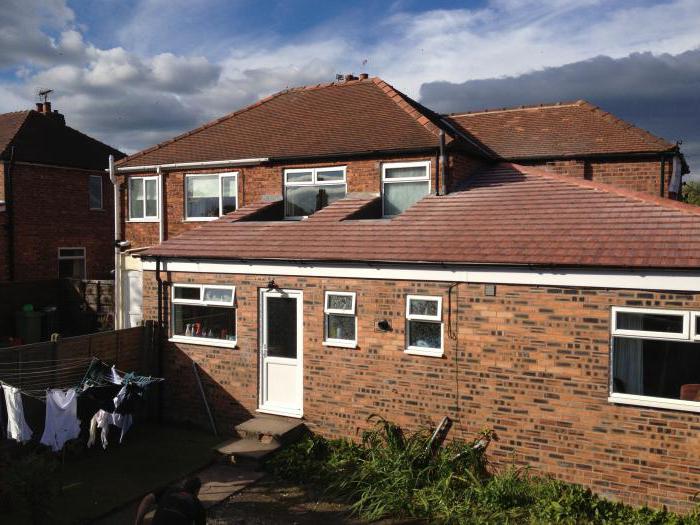
The 4-stranded roof has a Mauerlat, which should be located at 5 cm or closer from the edge of the external planes of the walls. Fixation to the wall should be done in such a way as not to create a sailboat that will contribute to extensive loads with strong wind. Most often, wood is used as a material for Mauerlala, but if the roofing frame is made of metal, then you can use a 2-way or a chaserler.
Mauselat Roof Device
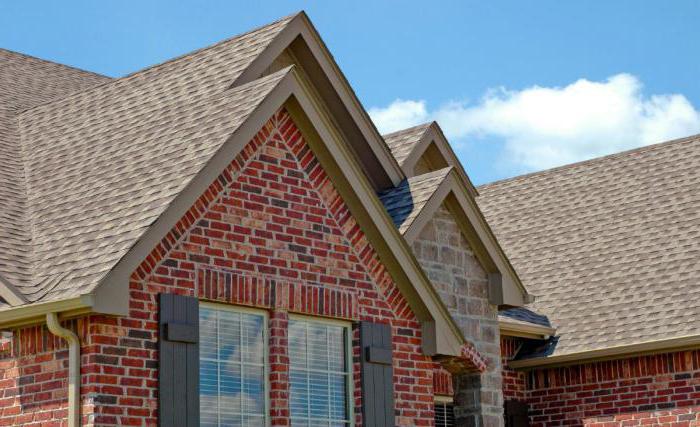
If you think about how to make a scope roof with Mauerlat, then the latter is carried out by a waterproofing layer, which can perform rulerOroid. From the top you can retreat 40 cm. Every 5 m, the runs are based on the racks that are lying down in the litter. The angle between the subpatch and the rafter foot should be approximately 90 °. If the device has a big length when the car roof device is, the installation of additional supports should be carried out with regard to the licker on the ice. Each Maurolalat link should be bonded with two links located in the neighborhood and simultaneously fixing to the rafters. A reliable design should be formed around the perimeter of the roofing system. But separate segments of Mauerlat may be located under rare legs.
Device of the rafter system
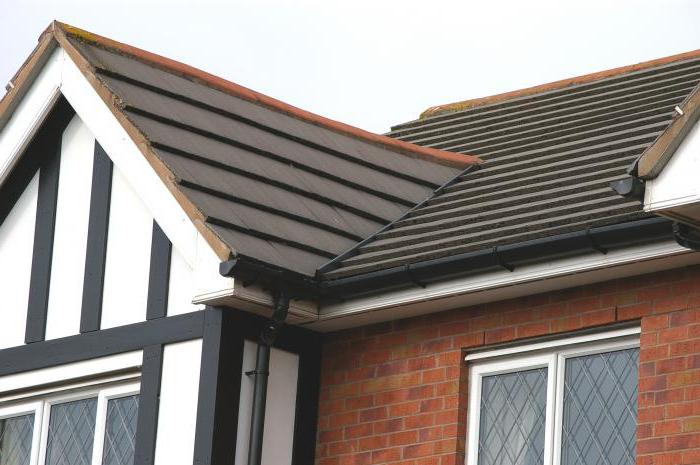
The 4-pitched roof has a carrying construction in the form of a rafter system, its composition includes rafting legs, inclined struts, as well as vertical racks. The rafters are made of wood, mixed materials, metal or reinforced concrete. Rigels, struts, struts, and racks are fasteners. The rafters are connected in the farm.
For reference

The rafter system must be connected into a triangle, due to its rigidity and stability. For rafters, the bar of different sections can be used, which is determined by the length of the rafter legs, the calculated load, as well as the distance between the rafters. If we are talking about simple structures, the size of the section may vary from 40x150 to 100x250 millimeters.
Half-raid roof
If you decide to build a house, the scope roof can be the best solution, one of the varieties of such a design is the half-haired roof. Such roofs are suitable for regions with strong wind loads, as they protect the construction from air flows, excluding the erosion of the front and pod. The attic room will be original, it can be used as a residential. Experts recommend adhere to a certain technology during construction. At the first stage, the tie is poured around the perimeter of the roof, in it every 120 centimeters, or less studs are installed, the diameter of which is 10 mm. The locking bars, tightened with nuts, are located on these fasteners. This will allow you to form Mauerlat, which after you will set the rafter system.
The next step will be the installation of inclined rafters, which will rely on the outer walls. In order to reduce the load for the last of them, you should perform a tightening that connects the rafting legs between with you. The edge will rest in the outer walls, while the inner part is on supports and inner walls.
Locking rafter is made on the ski bar, which is stacked on the top. It will connect the supports. On Valm, the beams are strengthened to extreme supports. All other should be fixed to the skate. Installation of intermediate rafters is performed at the next stage. The step between them should be equal to the width of thermal insulation, this parameter varies from 60 to 120 cm. Next to be installed transverse beams.
Single-pole device
At the first stage, it is necessary to determine what intermediate values \u200b\u200bare between 11 and 60 °. Everything will depend on atmospheric phenomena, roofing materials, as well as architectural features of the house. For the northern regions, the skate should be 40 °, while the snow will not linger on the roof. With severe winds, the angle of inclination should be small. In the steppe and seaside areas, this parameter is from 11 to 45 °.
Methodology of work on the arrangement of a single-table roof
For regions with strong winds, a flat roof can be suitable, the pitched roof must be given a certain slope. After that, you can start the construction of the rafting system. This roof node can be sliding, hanging or voted. The latter is the easiest, while the rafters must be based on the outer walls and the central beam. The length of the rafter leg can be 4.5 m, but only if it is solid, it is unacceptable to connect elements to build lengths.
The most difficult in the device and the design are they are applicable if there is a need to get big spans. They are collected on earth with their own crate, and after raising upstairs, relying on extreme supports. After the attic of the attic is nailed to the cut, which gives the design higher strength. For a rafter system of a single-table roof, it is best to use bars with a cross section of 30x150 mm. At the same time, the distance between the beams should be 80 cm.
The slope should be drawn by the bottom to the leeward side. The number of beam supports should coincide, and the triangles should be formed with beams and rafter foot. The rafters are stacked by one end in the Mauerlat's nest, while the other end should be scoring into the bar with slate nails. To increase reliability, they are spinning with wire. Maurylalat for the suspension ties to the wall or fix long
The next step will be the manufacture of laughter of planed boards, which are treated with fire-resistant and moisture protection substances. The boards are perpendicular to the rafters, the distance between them should not be more than 15 cm. For the root, the bars of the square cross section should be used, with a side of 50 mm. Further the vaporizolation is stacked and fixed to the lamp with small nails with a wide hat. The latter are sometimes replaced with construction staple brackets. This will not only accelerate the time of work, but also will prolong the service life of the rafter.
At the next stage, thermal insulation and waterproofing layer are installed, the roll of the latter of which is unlocked perpendicular to the rafters. At the same time, it is important to provide the next strip to the previous one, and the joints of the junctions should be sealed.
Conclusion
Slinge systems that are an integral part of the pitched roofs may have as part of attic farms, farms with an upper belt of complex shape, scissor farm or double farms. The main element of the rafter system protrude legs that perform the role of supporting the root. They are placed along the roofing slope.
The most suitable slope for the single-chain you want to cover the rubberoid, the indicator is from 10 to 15 °. At the same time there will be a sufficiently two-layer coating from the underlying and outer layer of rubberoid. But when forming a rafter system, you need to consider the size of the construction. If it is to have a large size, the design must be complemented with racks and fights.


